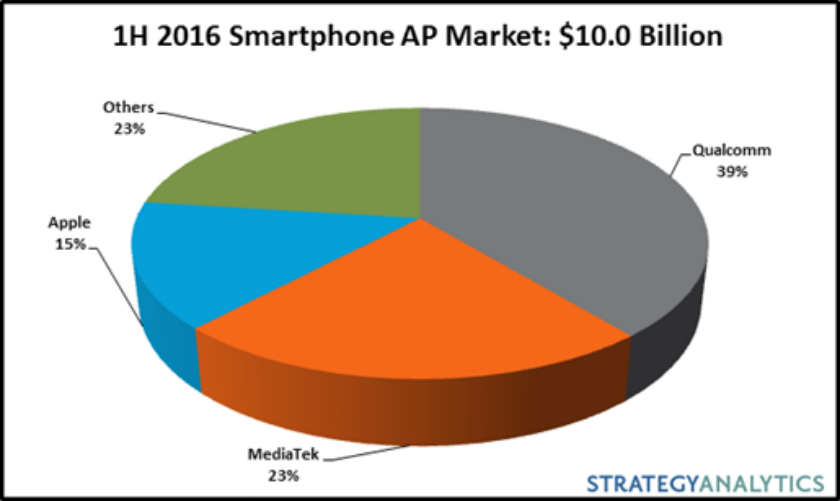Affiliate links on Android Authority may earn us a commission. Learn more.
The 5 biggest names in the $10 billion chipset industry

The mobile application processor (APU) industry hit a milestone in the first half of 2016: growing three percent to cross the $10 billion threshold. The driving force behind that growth was, surprisingly enough, LTE. As access to LTE networks continues to grow, so too does the need for LTE-equipped smartphone SoCs. But do you know the five biggest names in chipsets?

Considering the, let’s say, “rough” year that Qualcomm had in 2015 on the back of the overheating Snapdragon 810, the company bounced back considerably in the first half of 2016. According to new figures from Strategy Analytics, Qualcomm maintained its number one position with 39% market share.
Taking second spot globally was MediaTek, manufacturer of many of the smartphone chipsets found in various rapidly expanding Asian markets. MediaTek grew significantly in the first half of the year, partially on the back of Qualcomm’s misfortunes, and hit mid-2016 with a 23% revenue share.

Apple came next with 15%, which isn’t bad at all considering the extremely short list of devices in which Apple’s chipsets even appear. Samsung LSI and Spreadtrum rounded out the top five, with HUAWEI’s HiSilicon not far behind. These three manufacturers, as well as MediaTek, all enjoyed double digit shipment growth in the first half of 2016.
Strategy Analytics estimates that two-thirds of the total number of smartphone SoCs shipped in the first half of 2016 were 64-bit chipsets. But considering Samsung LSI’s dependance on Samsung device sales, the Note 7 recall might mean trouble for the semiconductor division’s revenue in the second half of the year.
Get up to speed on the latest semiconductor news: